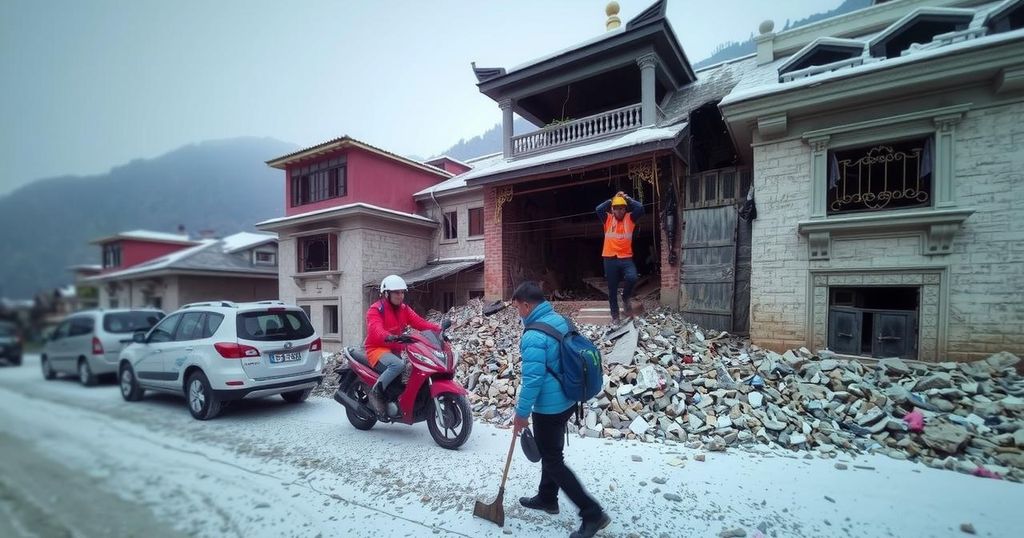Tremors of Tragedy: Earthquake in Tibet Claims Lives and Challenges Recovery Efforts
A magnitude 6.8 earthquake hit Tibet on January 7, killing at least 126 people and injuring 188, with ongoing rescue operations and significant destruction of housing. The rescue efforts are hindered by harsh winter temperatures and numerous aftershocks, as Chinese authorities mobilize rescue personnel to address the crisis. The earthquake also raises concerns regarding governance and cultural issues in Tibet.
On January 7, a devastating earthquake of magnitude 6.8 struck the Tingri district of Tibet, resulting in the tragic loss of at least 126 lives and leaving 188 individuals injured. Rescue operations are currently underway, with over 400 people having been successfully extricated from the debris. However, an unknown number remain trapped following the destruction of more than 3,600 homes in the Shigatse prefecture. The seismic activity was felt not only in Tibet but also across neighboring countries including Nepal, Bhutan, and India.
The aftermath of the earthquake has been compounded by over 500 aftershocks, making rescue efforts exceedingly difficult. In addition, plummeting temperatures, dropping to as low as -18°C overnight, pose a severe threat to those still trapped and displaced by the disaster. Eyewitness accounts describe the destruction as houses were “shattering” under the earthquake’s force. In response, Chinese authorities have mobilized over 1,800 rescue workers and 1,600 military personnel to assist in relief operations.
Tibet, recognized as an autonomous region within China, has a complex historical context characterized by assertions of both independence and subsequent control by the Chinese government. Following a brief period of independence starting in 1912, Chinese rule was reinstated in 1951, with the region being granted autonomy in 1965. While the Chinese government promotes claims of development and cultural support in Tibet, competing narratives assert significant concerns regarding religious repression and cultural erosion.
Displaced individuals as a result of the earthquake urgently require temporary shelters and heating solutions, and local authorities are diligently seeking resources to address these needs. The situation in Tibet underscores the region’s ongoing sensitivity surrounding issues of governance and cultural identity amid a humanitarian disaster.
The January 7 earthquake in Tibet is a significant event highlighting both the geological risks the region faces and the ongoing complexities of its political landscape. Located in the foothills of the Himalayas, Tibet is susceptible to seismic activity. The historical context surrounding Tibet’s autonomy and governance under Chinese control is essential for understanding the regional implications of such disasters. Additionally, the interplay between natural disasters and local government capabilities in disaster management further complicates the state’s response, particularly in context of the local culture and ongoing controversies regarding religious freedom and cultural preservation.
The earthquake in Tibet has resulted in significant human and material loss, posing a challenge to rescue and recovery efforts exacerbated by harsh winter conditions. The incident serves as a reminder of Tibet’s vulnerability to natural disasters and highlights the delicate balance between governance, cultural issues, and humanitarian response within the region. As the situation develops, the need for immediate relief and long-term recovery strategies will be critical for the affected communities.
Original Source: babel.ua




Post Comment